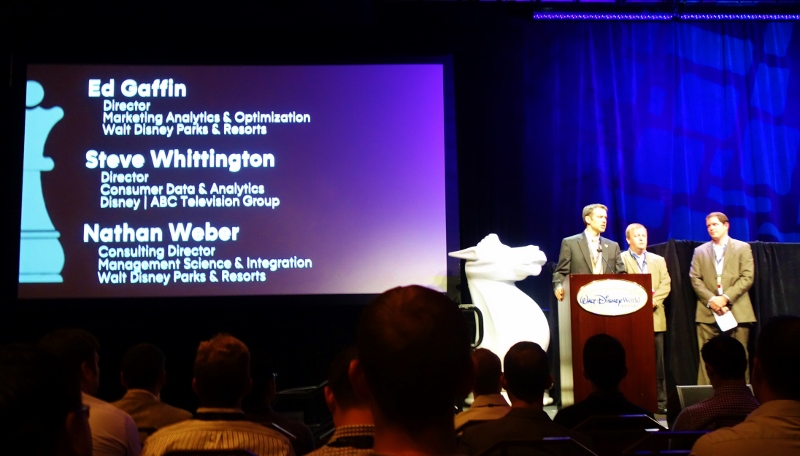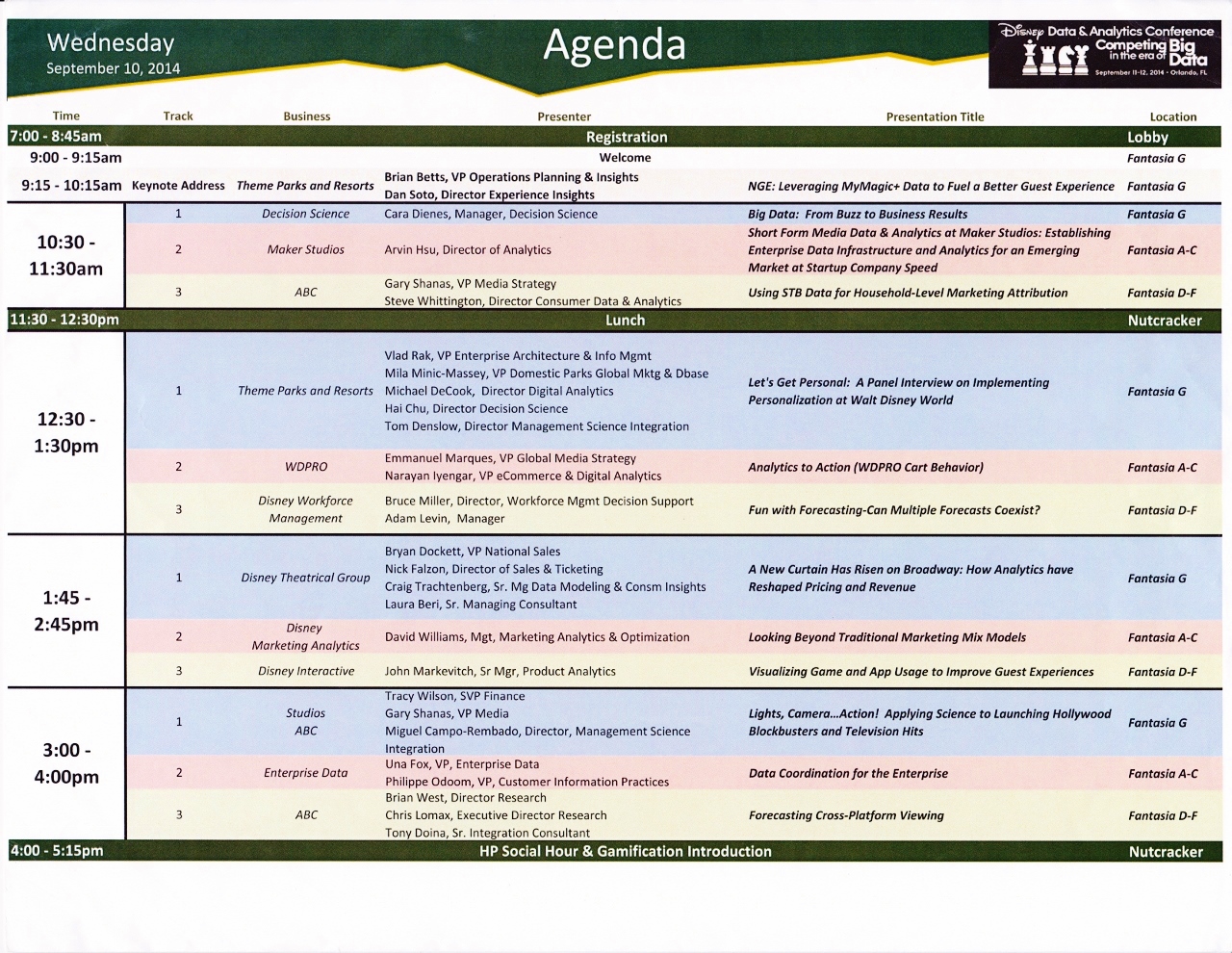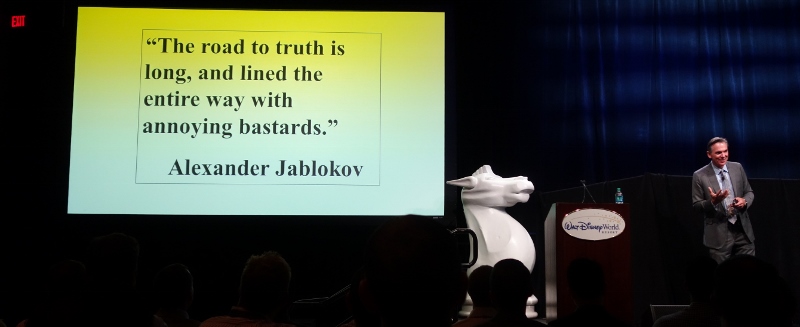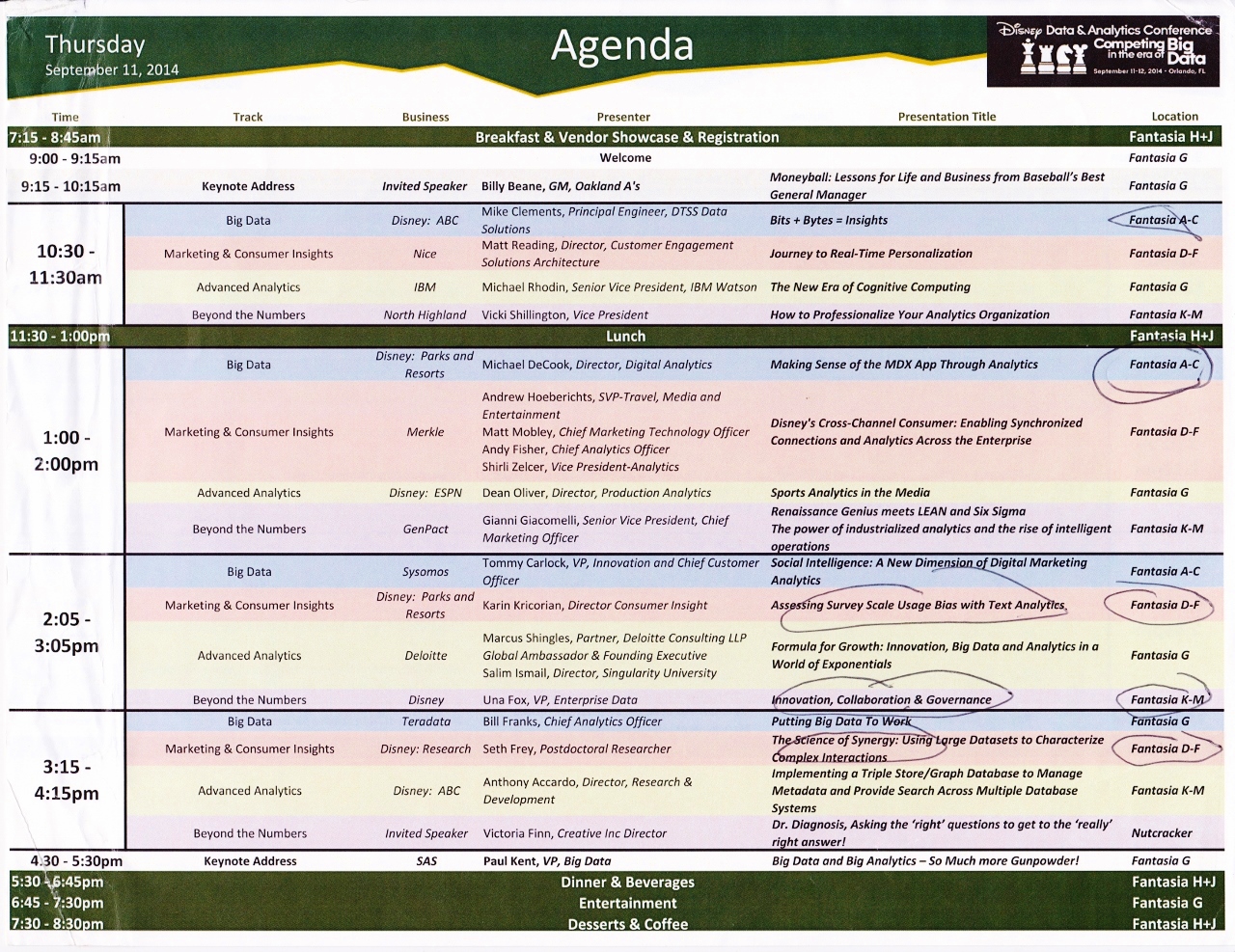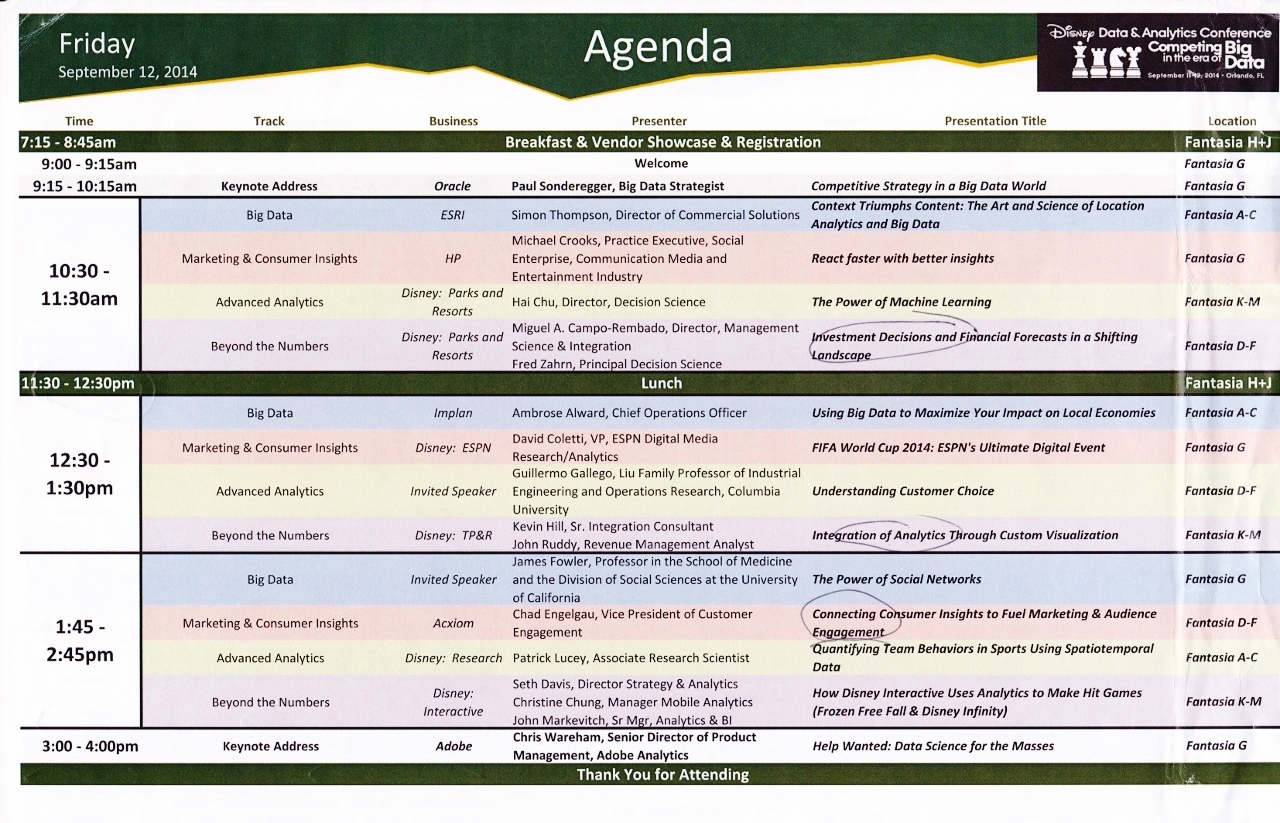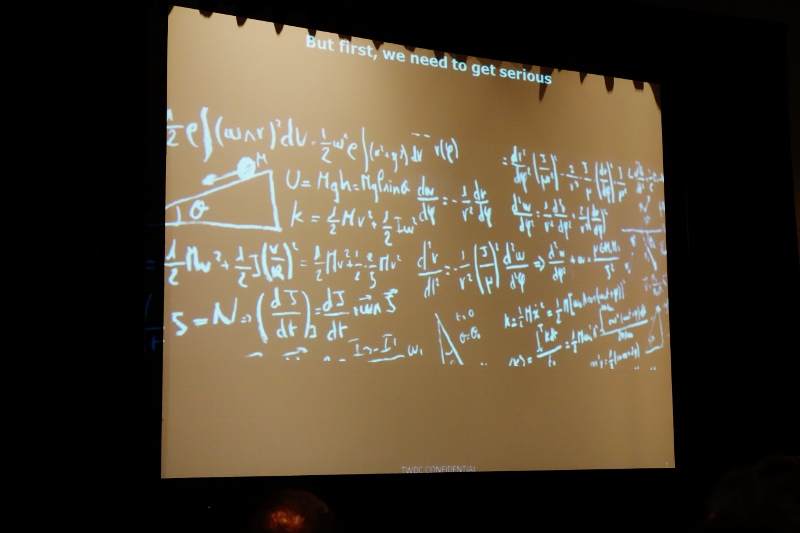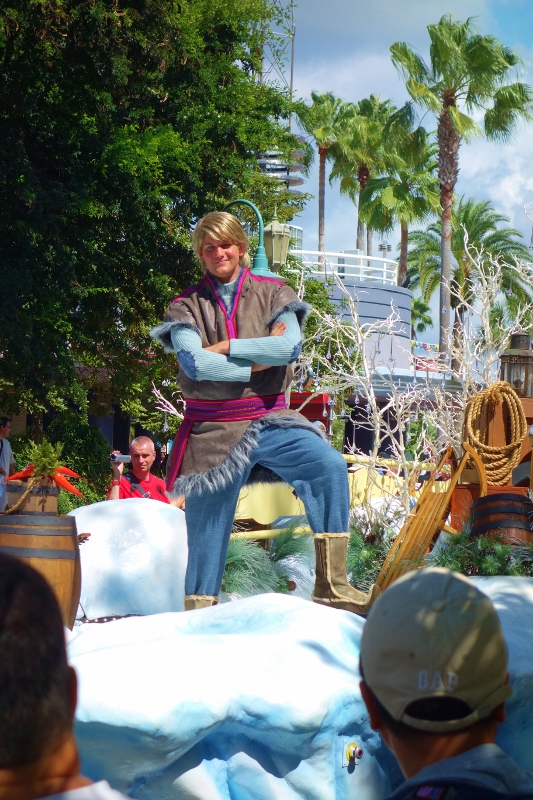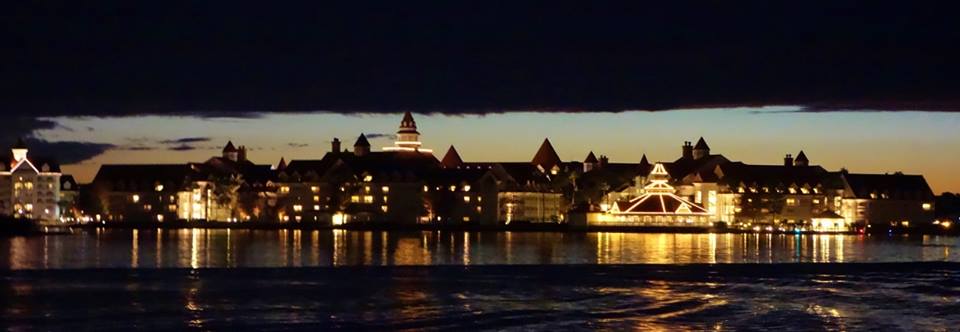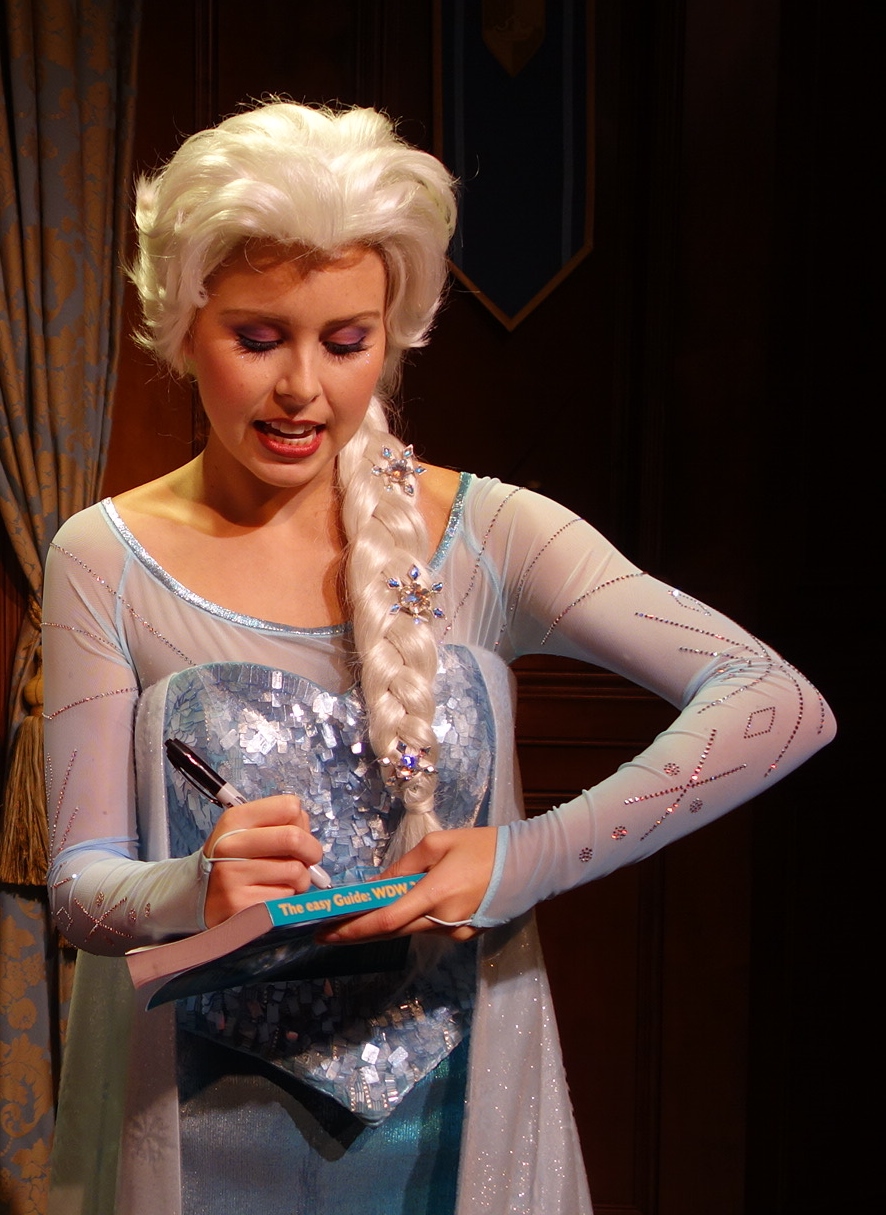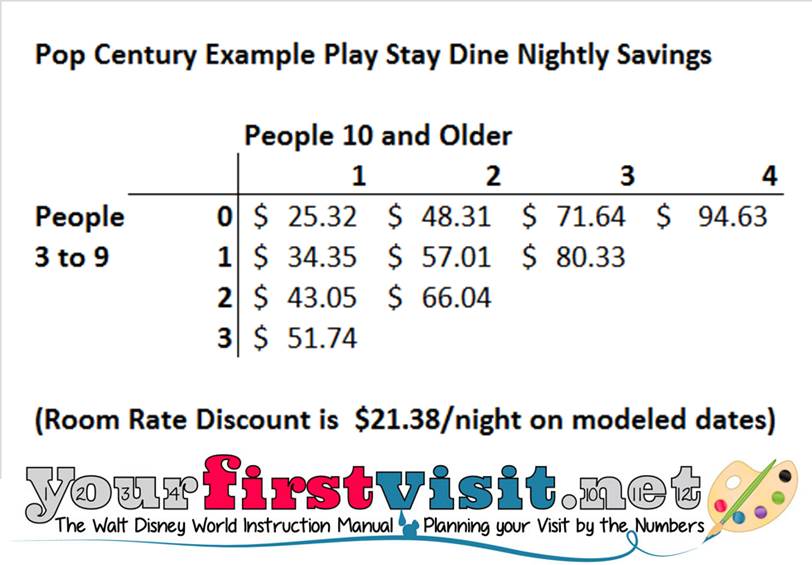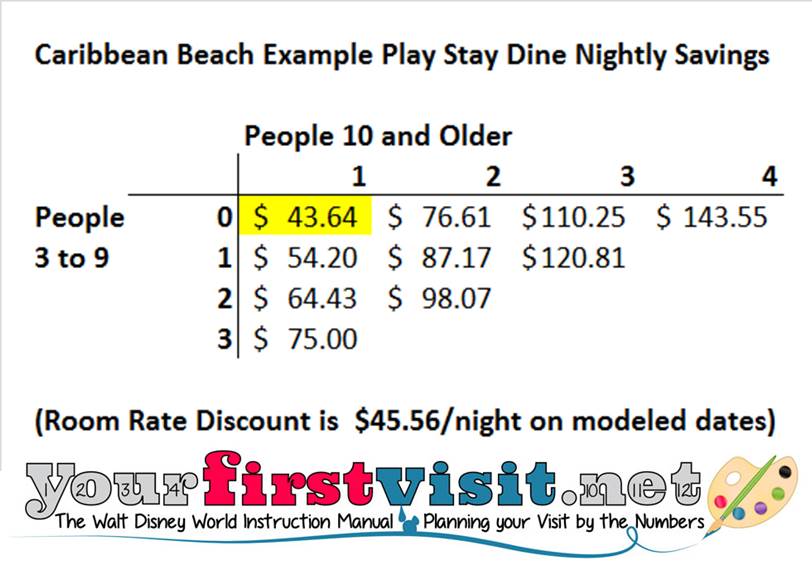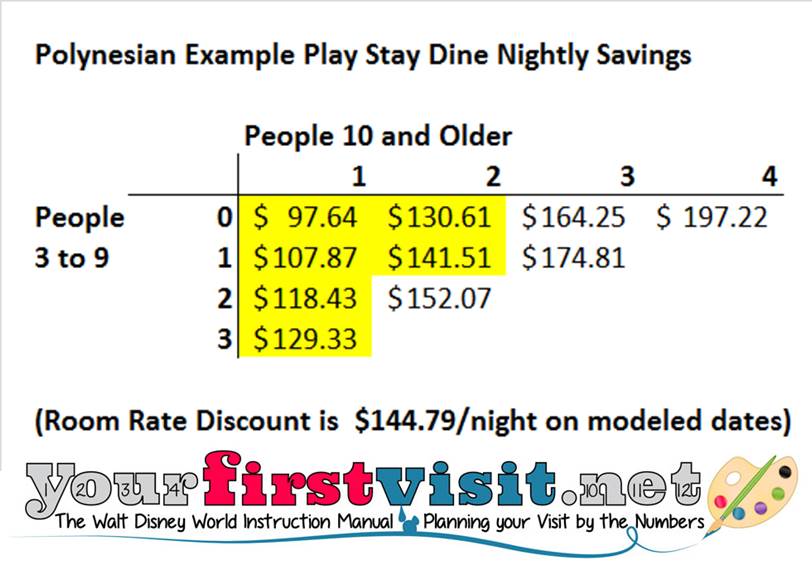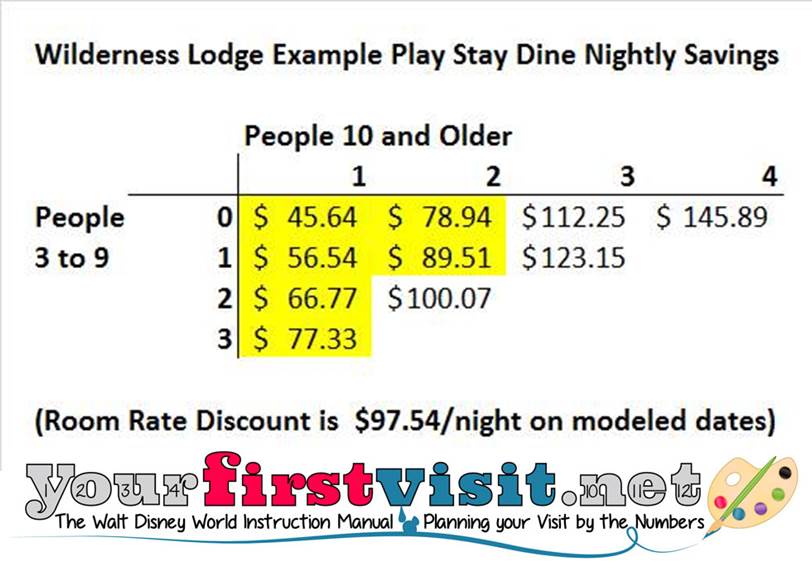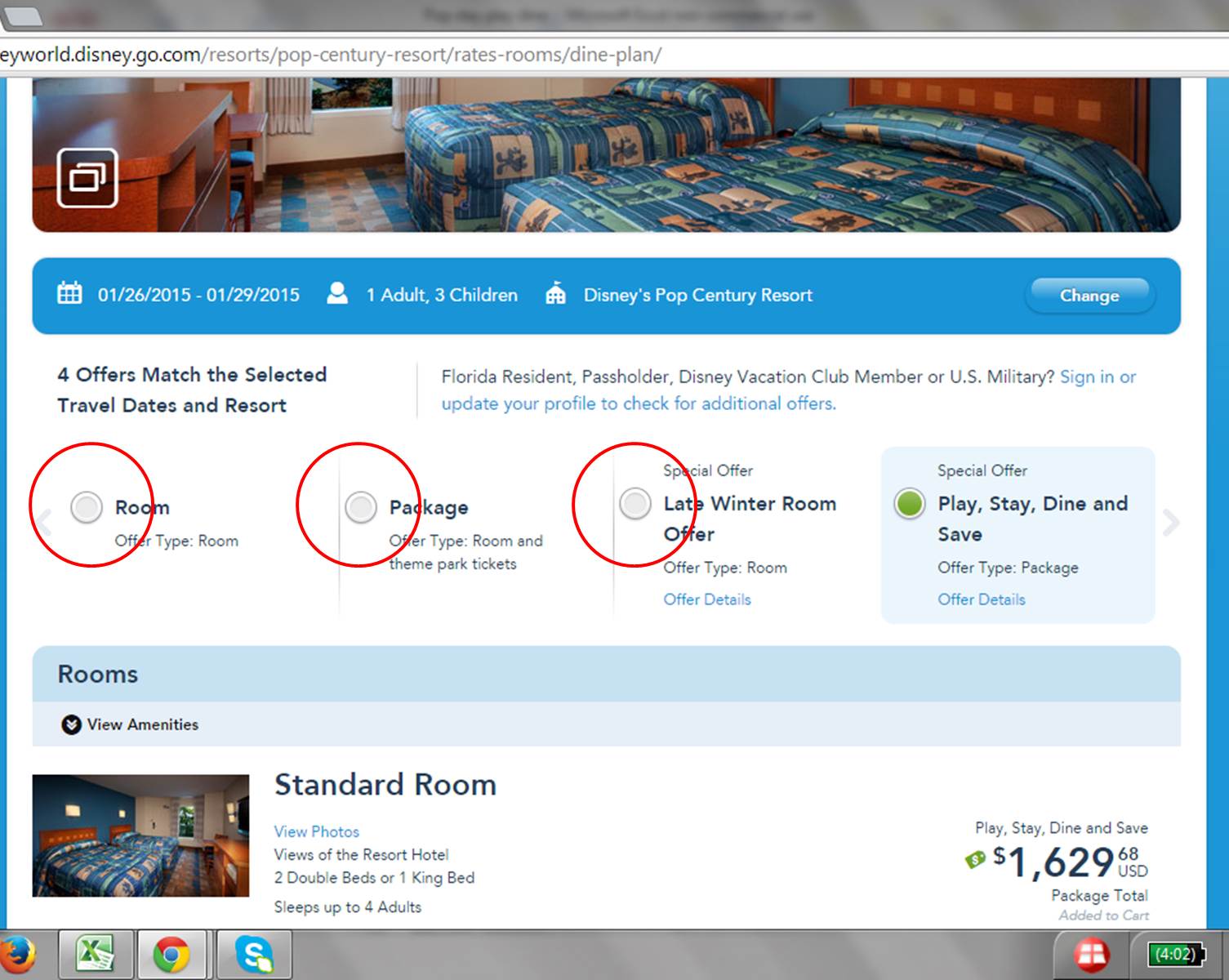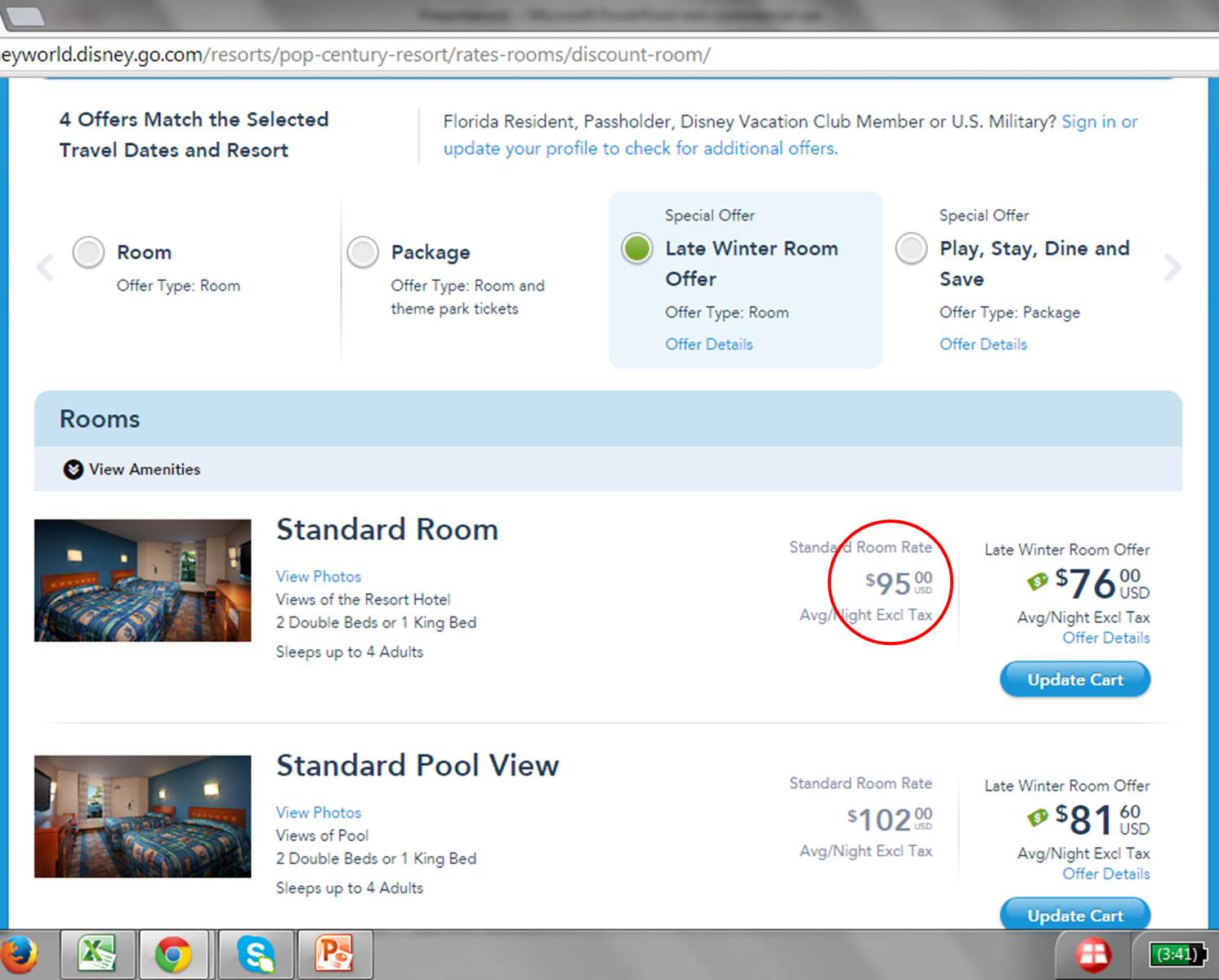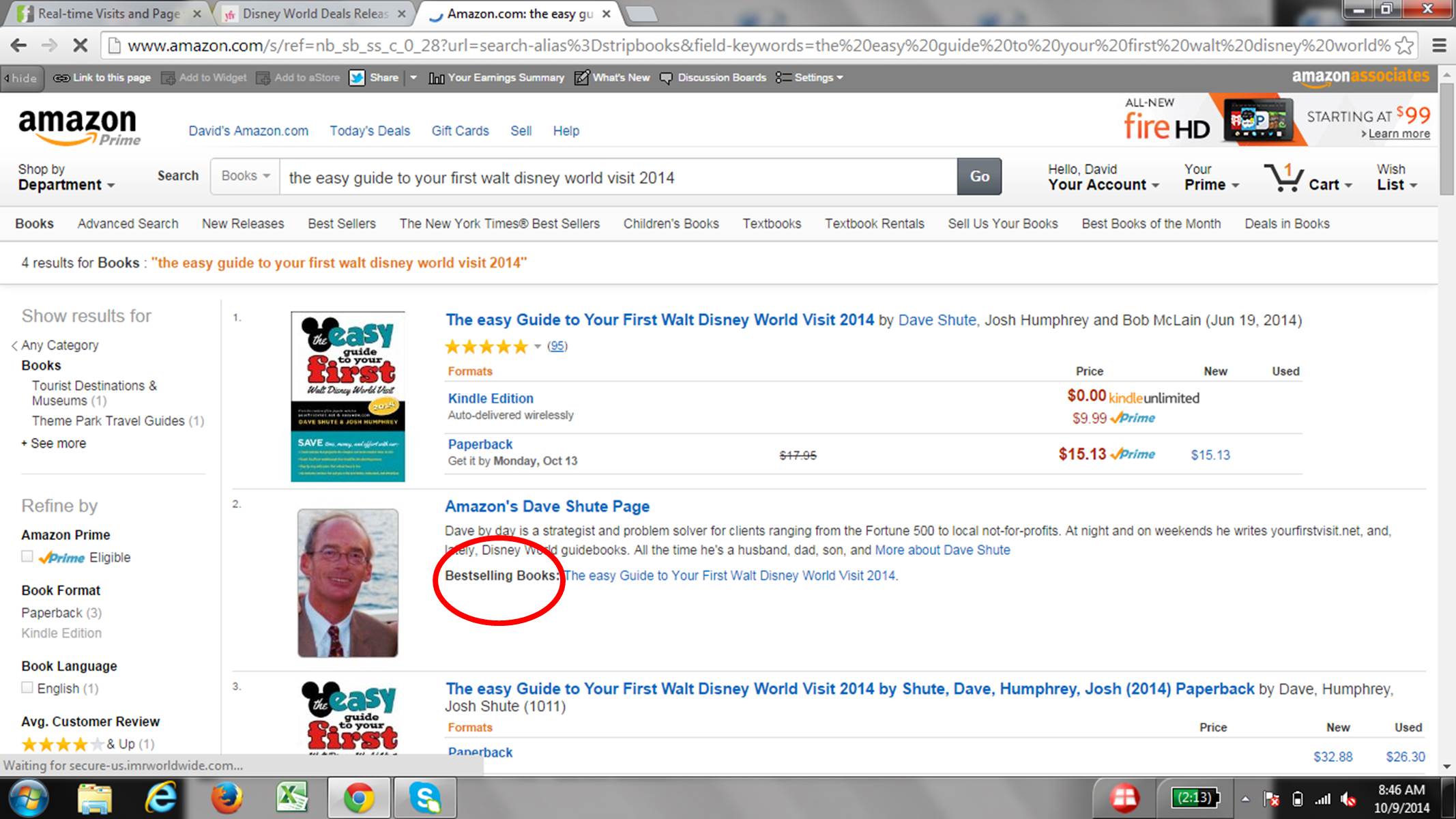Category — p. News and Changes
(Mis)understandings from the 2014 Disney Data and Analytics Conference
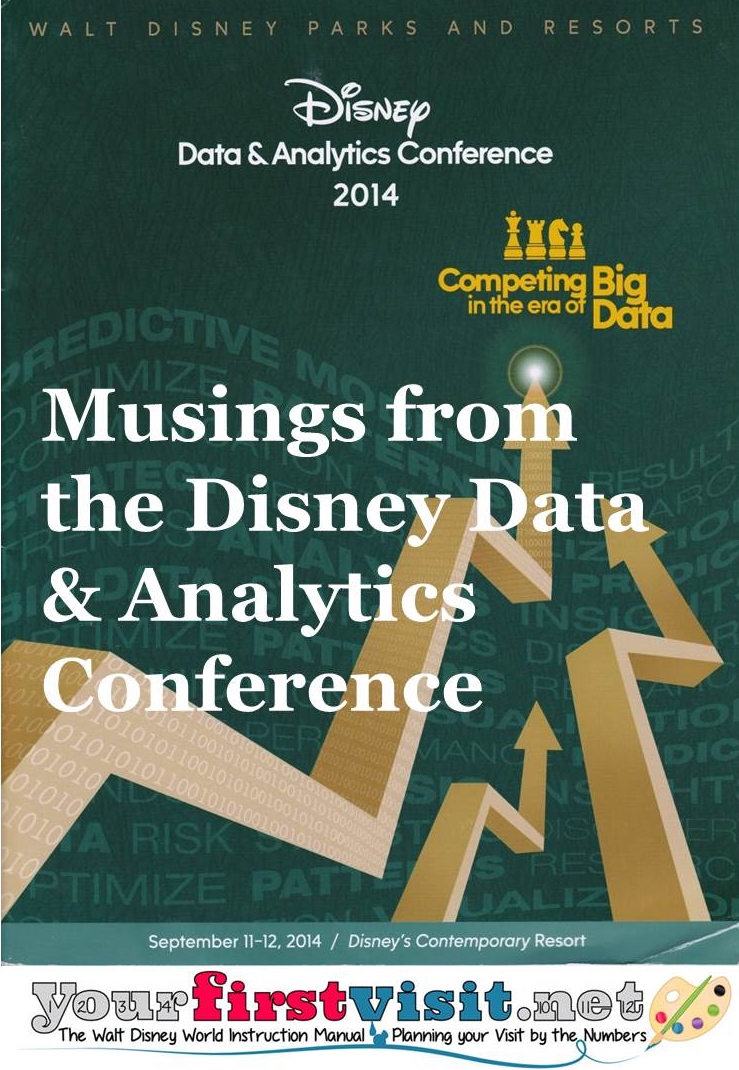
(It was canceled in 2013, perhaps because so many people who would have been involved in it were instead working to get FastPass+ back on track.)
While the conference is open to anyone willing to pay, the vast majority of attendees are Disney analytic folk and their software allies.
At the 2014 Conference in September, of the 800 or so attendees, more than 500 worked for one or another branch of Disney—particularly Parks and Resorts, but also units ranging from ESPN to the Disney Theatrical Group—the Broadway gang.
All are brought together to learn more about the use of data for business purposes, and the overwhelming attendance by Disney folk also means that you can try to infer what Disney is thinking about from the program offerings.
In 2014, the first day was Disney-only. Note some of the discussion topics (click to enlarge)–the keynote that began the day was “NGE: Leveraging MyMagic+ Data for a Better Guest Experience.” (“NGE”= “Next Generation Experience”–the overarching name of the program that includes “My Disney Experience,” FastPass+, MagicBands etc.) A later discussion was a panel on personalization. My thoughts on personalization, such as they are, in response to the 2012 Analytics meeting are here.
After that, the public sessions began—the Disney folk stayed, and were joined by data and analytics professionals from all kinds of businesses, by a number professors of management science—and by one consultant/blogger/guidebook author.
Billy Beane did the keynote that began the public session, and was wonderful. Depending on the audience member, his topic was either the use of under-appreciated data to gain a competitive edge, or about Brad Pitt, Angelina Jolie, and the filming of Moneyball, the book on the analytic efforts of the Oakland A’s. For either audience the talk was great–highly philosophical.
Then a number of breakouts and exhibit hall sessions were offered. New in the exhibit hall this year was booths staffed by Disney folk themselves—e.g. the team that builds the MagicBand near and far-field readers was there, as were some of Disney’s scientists from their Pittsburgh and other research operations.
The program from the first public day:
And from the second:
And some notes I took:
Ha! Not really…
But here are some things I thought I understood, learned or discovered over the course of the Summit:
During the course of a presentation of the analytics team behind the My Disney Experience app, one of the presenters commented that “the web page is for planning, and the app is for near-visit and in-park use.” This makes perfect sense, given the limitations of each—but I have never heard the distinction so succinctly put before. Frankly, the website is almost always easier to use, and sometimes more up to date, than the app—so it should be the first place you go for changes unless you are in the parks themselves.
Disney continues on a pathway to transform itself and use the data it is creating. One senior presenter noted that “I have frequent conversations with Bob Iger about how to create a more data-driven culture at Disney.” A much more junior analyst noted that “analytics is traditionally separate from operations, but we are seeing analytics being built into operations more.”
An example: there’s two types of MagicBand readers (or, strictly, RFID readers, since plastic tickets have RFID now too.) We are all familiar with the first kind, the ones you tap your bands on—to get into a room, to enter a park, for FastPass+ return, to buy stuff. These have limited range.
A different reader can read your MagicBand at a distance—I saw them in the exhibit hall and talked to their builders. It’s a black thingy that looks like a stereo speaker (like a small one if you are over 40, or like a large one if you are under 40). There’s more than 8oo of these distance readers at Disney World, and so far as I could tell from the conference, their promise is still largely untapped.
Take an example—Disney now can know exactly how many people are in Epcot at the beginning of IllumiNations, which of them are closer the bus stops and which are at the further end of World Showcase Lagoon, what hotels they are staying in, and which of them arrived at Epcot by bus. It can use this data to optimize the destinations of the waves of buses after IllumiNations to minimize total bus waits, but, so far, it seems in general not to be using data much this way.
(It’s using new data a bit. For example, the ability to tie a ride photo to a person comes from several of these far-field readers operating in tandem to geo-locate a MagicBand.)
Anyone who has consulted to or been a member of large organizations knows why. Operations are run by operators, not analysts, and new analytic approaches in the short run just create a burden on the operations team for their design, data gathering, testing, re-training and implementation. So almost everywhere “the way we’ve always done it around here” gets in the way of the optimal. A senior speaker noted “we create and store data on a bet that it will have value in the future,” and that future has not yet arrived.
So despite all the changes from FastPass+ in the last year, none of us has yet experienced a Disney World visit fully informed by data…this will come, but it will unfold in parts and pieces, over time.
By the way—the data Disney will use to work all this is not stored on your MagicBand.
Your MagicBand has two identifying systems, one for secure nearfield transactions using your pin, and the other for non-pin near and far-field transactions like entering the park.
MagicBands and their nearfield readers query each other to make sure they are communicating with authentic Disney devices, and then the only info grabbed by the system from your band is an alphanumeric code. The code is then pulled into Disney’s databases behind the scenes, and it’s those behind the scenes secure databases that have all your relevant data—for example, matching who you are to a valid park entry to a valid FastPass+ at that time, and then communicating back to the operating systems to make the FastPass+ reader turn green.
So while hacking of the behind the scenes databases is always possible, snatching your ID off your MagicBand is both hard (because of the validation handshakes) and also not even important, as all the bad guy will get is the alphanumeric identifier, not of much use without access to the secure behind the scenes databases.
But still, for this data to be useful Disney needs to know you are you.
Someone who has not been involved in creating a data warehouse would be astonished at the kinds of issues that emerge in them. The most profound of these is a single nomenclature—having a single and unique code that applies to a single and unique concept, and links all of the interactions of that concept within the system.
Take who you are. I have had many interactions with Disney over the years, using many variants of my name (“Dave Shute” to “David H. Shute” with other versions and typos in between), many credit cards, several different phone numbers, different email addresses, different physical addresses, etc. Plus, shockingly enough, there’s a lot of guys who have my exact same first and last name.
Now Disney has a better chance of improving my experience and lightening my wallet the more it knows about me—but it needs to know it is talking with me, despite whatever email, phone number, credit card, or intentional or unintentional name variant I am using!
The beauty (from a a data warehouse point of view…) of My Disney Experience and MagicBands is the much richer, more accurate, and more specific association of my identity with my touch points with Disney World—both in the planning process and at the resort.
It’s this much tighter linkage of identity and experience data that powers the whole potentiality of the NextGen project—not FastPass+, which is simply the hook that makes us willing to allow Disney to capture this connection of identity and experience.
Identity raises fascinating issues in other contexts as well. Most profound among them is the misleadingly simple question of “what is the product?”
Take a simple example. Under traditional management approaches, “Frozen” is the overarching brand, which then has sub-brands of all the characters in it, some of which cross to other brands—e.g. Anna and Elsa work both separately and as a pair of sisters, and work both as Frozen characters and as part of universe of “Disney Princesses.”
But say you had dolls for all the major characters for single unit sales, and wanted to know how to optimally group them for package sales. You could guess based on rules of thumb, heuristics, and standard literary analysis.
Or you could use data. With enough sales, purchaser identity data, and analysis, you could identify which subgroups of characters are bought by the same family—e.g. just as a made-up example, you might discover that Elsa is often bought alone, but rarely Anna alone—that Anna is sold most often with Elsa, or with Kristoff, yet all three are rarely bought together.
This analysis begins to accurately define the higher order groupings of the components of the offering which otherwise would take mind-reading, some of which will be obvious but some of which are likely to be novel. That is, it helps identify and define the actual products as customers see them in their own minds…
Take this analogy to the parks. We think of there being parks, and within them lands, and within them attractions. We know that in general some attractions are more attractive to definable demographic groups than others—especially by age. But everything is much more subtle and various than that. With the data becoming increasingly available to Disney—plus some guest surveys—all of the different ways that the parks are experienced, and how pleasing they are, can be used to more sharply understand—and manage to– all the different “products” actually offered.
But first Disney needs to start using much more the data it’s already collecting from the far-field readers!!
Follow yourfirstvisit.net on Facebook or Google+ or Twitter or Pinterest!!
October 23, 2014 22 Comments
100 Different Rooms
“I’ve long said that Dave has the absolute best Disney resort room information I have found!” –Didi Marie, DIStherapy
As of yesterday, with the review of our latest stay in a Royal Room published, I am at one of those rare moments where all of my hotel reviews are up to date, and I thought to step back a bit and reflect.
(I still have some updating to do in my general overviews of the hotels, but for the first time in a year and a half I have no backlog of stays to finish writing about.)
Over the course of my August and September 2014 visits to Walt Disney World, the total number of Disney World-owned different accommodations I have stayed in and published about crossed more than 100.
This matters because universally the weakest parts of most Disney World guidebooks and websites are their material on where to stay.
One person staying repeatedly in all the rooms and in all their major variants is the only way to develop a complete, consistent, up to date and accurate picture of the hotel options and their strong and weak points.
Reading and copying other people’s experiences just won’t cut it, and those whose approach depends on this—even some of the most famous out there—routinely publish howlers and generally get too many things wrong.
Even having your own team of reviewers doesn’t work well, as they can’t compare across their own direct experiences the way a single reviewer can, leading them to miss floor plan nuances or even major differences.
Consistently good and up to date material on the Disney hotel options is rare because it takes major, multi-year commitments of time, attention and money.
Luckily, I have been able to create the time, Adderall helps with the attention thing, and you—because of your support of the various sponsors and interest in the various ads on this site—create the money that in turn I spend trying to keep this hotel material great and up to date.
I’ve now stayed in 103 different Disney-owned accommodations at Disney World, plus even more non-Disney options.
This includes
- 22 value resort rooms and family suites, with my most highly recommended value resorts Art of Animation and Pop Century in the lead with 5 and 8 stays respectively
- 25 rooms at the moderates, led by 7 in Port Orleans Riverside and 6 at my top-ranked Caribbean Beach
- 24 stays at the deluxe resorts, led by 5 at the Contemporary and 4 at the top rated (but under major refurb) Polynesian
- 29 different DVC rooms, mostly Two Bedrooms Villas–the best to review, as they show features of One Bedroom Villas and Studios as well–but where they were not bookable, a One Bedroom and a Studio, led by top ranked Villas at the Wilderness Lodge with 6 stays
- Stays at 3 different campsites at Fort Wilderness (my 3 stays in the Cabins are counted among the moderates.)
Moreover, in a push that I can’t imagine doing again—it was too demanding and exhausting–I stayed in and reviewed 38 different Disney-owned rooms since August 2013, for a couple of different reasons
- I did multiple visits over the period–first to test various features of the new FastPass+ program and then later to see and review new stuff like the Festival of Fantasy afternoon parade, Seven Dwarfs Mine Train, the Anna and Elsa Meet and Greet, the Frozen Sing-Along, and the reopening of Festival of the Lion King–so of course had to stay somewhere during those tests and visits
- There were openings and major refurbs that had to be attended to—for example, the Villas at the Grand Floridian and Four Seasons (not a Disney hotel) opened, and the Villas at the Wilderness Lodge and the Grand Floridian completed and Caribbean Beach began major refurbs.
- It took me a while, but I finally realized how much the camera in my iPhone 4 has decayed, so I got a new camera and with it took the opportunity to stay in, re-shoot, and re-review a number of rooms. (Still on the list for re-visits for better photos are Pirate rooms at Caribbean Beach, exteriors at Coronado Springs, a Two Bedroom Villa at Old Key West and the Nemo suites at Art of Animation—I’m booked in these, plus both room types at Universal’s Cabana Bay Beach Resort, during my November and December trips).
What’s next after November and December? Well, I hope 2015 will be a lot easier than the 17 months that will end in December 2014 with their 42 Disney rooms (and 4 non-Disney rooms) in 14 visits…
I haven’t entirely figured this out, but 2015 for sure will bring visits to the new Polynesian DVC offerings, and re-visits to the Beach Club and Coronado Springs after their expected refurbs!
Plus I also do requests…
Follow yourfirstvisit.net on Facebook or Google+ or Twitter or Pinterest!!
October 20, 2014 6 Comments
The Scoop On Food and Wine
A couple of my imaginary internet friends have published detailed reviews/overviews of the offerings at this year’s Epcot International Food And Wine Festival, which still has about another month to go.
- While Josh’s material starts here, there’s also a PDF of all his stuff linked to from here.
- …And my friend Kristen has a bunch of Food and Wine stuff linked to from here
Check them out!
Follow yourfirstvisit.net on Facebook or Google+ or Twitter or Pinterest!!
October 12, 2014 No Comments
Disney World’s “Play Stay Dine and Save” Discount
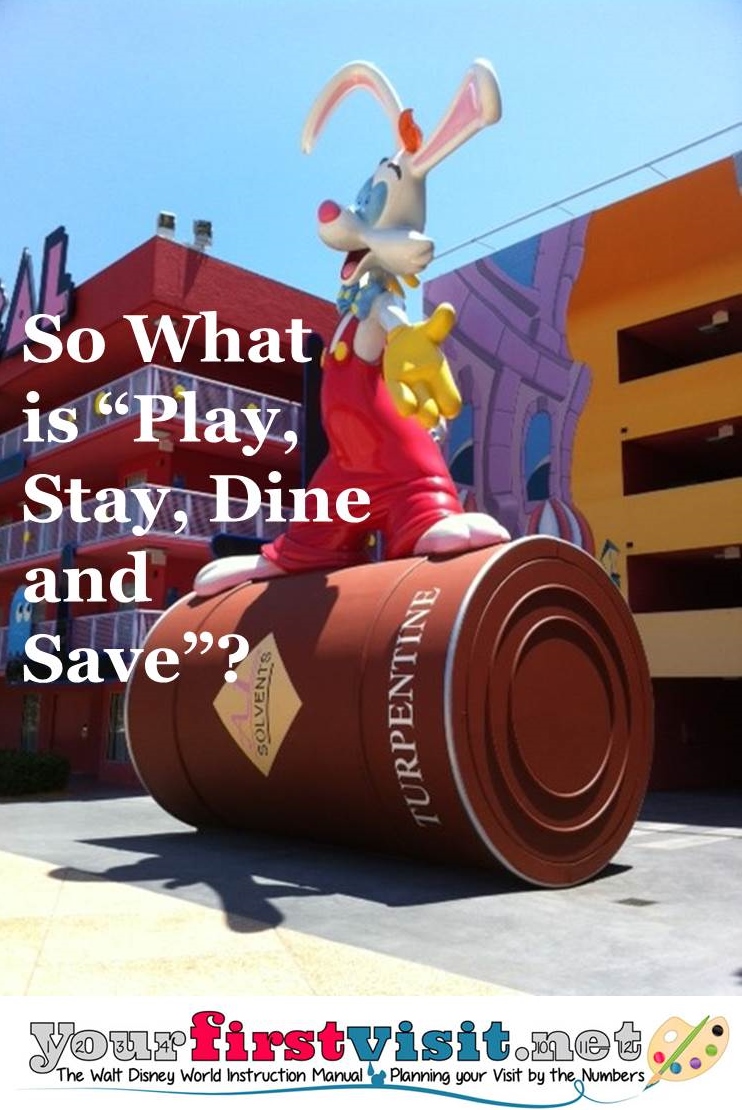
- “Room-only” deals: room rate discounts that lower the cost of rooms compared to whatever standard prices are offered the same dates
- “Free dining” deals: those who buy rooms and tickets at full standard prices get one of Disney’s Dining Plans for free
A third common deal, however, seems to cause a bit of confusion. This is Disney World’s “Play Stay Dine and Save” deal.
Some people call this “free dining.” That’s wrong. Other say that the savings in it come from people 10 and older paying the dining plan and ticket prices of 3 to 9 year olds. That’s wrong too.
What Stay Play Dine is is a discount of around 9%-17% off of what the price would otherwise be for a package including hotel nights, tickets, and dining plans. The actual percentage savings varies by the hotel, the number of people booking, and the age structure of the group, and the only way to calculate it is to do test bookings for the same dates and rooms with and without the deal.
Moreover, it’s almost always offered with a “room only” deal also offered the same nights. Smaller, younger groups in more expensive rooms may do better with the room only deal than Stay Play Dine. Here too you need to test to know.
THE CURRENT PLAY STAY DINE AND SAVE DEAL
Last week Disney World released two deals, Play Stay Dine (“PSD”) and room only, for into March 2015.
I tested PSD savings per night for several different hotels and family structures during a late January period and also compared them to the room rate deal (to see which saved more) and to rack rates (to see percentage savings).
Here’s the results:
At value resort Pop Century–where the dining plan is quick service–the room rate discount for a standard room is $21.38/night on the tested nights, and PSD is always better for any family type these nights.
Total discounts range from 9% to 14% and are in the higher end of the range as more of the party is 10 or older. At best, the discounts are 60% of the cost of the dining plan
At moderate resort Caribbean Beach, with the regular dining plan on the same nights in a standard room, nightly savings are below:
Room rate savings per night these nights for the same room are $45.56. Only a solo traveler does better with the room rate deal than PSD. Discounts range from 11-17%, with the higher percentage savings for families with more people 10 and older. The savings cover between 59 to 72% of the dining plan costs.
At the expense deluxe resort the Polynesian Village, the room rate deal is better for many families
Nightly savings from the room rate deal for a standard room the nights I modeled are $144.79, and PSD nightly savings vary depending on family size and age structure from around $100 to almost $200.
Many families do better with the room rate deal than PSD (in yellow). SPD percentage savings range from 13 to 17%. PSD Savings actually exceed free dining savings for some family structures, and at worst savings pay 80% of dining plan costs.
The Wilderness Lodge is the least expensive deluxe resort at Disney World.
Nightly savings for the room rate deal are $97.54 for standard rooms for the nights I tested.
PSD saves less for many family structures (in yellow) and saves more for others. Percentage savings for PSD are 9 to 15%, showing the same patterns as the other resorts–higher discounts with more people older than 9. The PSD savings in effect pay for 60-75% of dining plan costs.
Compare savings for a similar family–e.g. with two adults and two 3-9 year olds–across the last three resorts and you’ll see the nonsense of the claim “10 and ups pay 3-9 rates.” If that were true, nightly savings would be the same per family type, not varying across resorts as in fact they do!
HOW TO DECIDE IF PLAY STAY DINE IS FOR YOU?
In more expensive rooms, your savings will vary depending on size and the number of people older than 10 in the room.
For such groups, you simply need to test your reservation both ways. Go to Disney’s website, price for your dates, family size and ages, and room based on Play Stay Dine, then hit the radio button on the right next to the Play Stay for the room-rate deal price. Then go into the room rate deal and make sure the tickets and dining plan are set, and compare total prices at the end of your process.
(Note that the packages like PSD initially show with taxes included, but room pricing–rack or discounted–doesn’t add taxes til later in the process. I dunno why…)
Standard value resort rooms will pretty much always be a better deal under PSD than the room rate deal. Standard moderate rooms ditto except for very small parties (like a blogger on a solo visit to update a room review…). Deluxes should be double checked based on the radio buttons!!
Follow yourfirstvisit.net on Facebook or Google+ or Twitter or Pinterest!!
October 12, 2014 14 Comments
The easy Guide a Bestseller!
I saw the below on Amazon yesterday, so of course took a screenshot suitable for framing…
The part circled in red is what was new to me. So now I will have a distinguished obituary: “Bestselling author…”!!!
If you are going to Disney World in 2014, you really need this book. Buy it here. If your trip is in 2015, wait for our 2015 edition.
Of course, as Jim Korkis notes here, there may be “Collectors Edition” value to the 2014 version, as it is our first!!! So perhaps you should buy several copies of both…
Follow yourfirstvisit.net on Facebook or Google+ or Twitter or Pinterest!!
October 10, 2014 2 Comments
Disney World Deals Released for Early 2015
DISNEY WORLD DEALS INTO MARCH 2015

- One is a “Stay, Play and Dine” package discount with eligible arrival dates of 12/14-12/20/2014 and 1/5-3/7/2015
- Another is a room-only discount applicable most nights from 1/5-3/28/2015
These deals need to be booked by December 29, 2014.
“Stay Play and Dine” savings vary based on family size, ages, length of stay, and hotel. A couple of hotels are excluded from the December dates. Disney’s page on this deal is here.
Room only discounts are as follows:
Value Resorts:
- Little Mermaid rooms at Art of Animation: excluded
- All Star Sports, All Star Music, Pop Century and Family Suites at Art of Animation: 15% off on weekends, 20% off on weekdays
- All Star Movies: 10% off on weekends, 15% off on weekdays
Moderate Resorts:
- Coronado Springs, Caribbean Beach, Port Orleans Riverside, Cabins at Fort Wilderness: 20% off on weekends, 25% off on weekdays
- Port Orleans French Quarter: 10% off on weekends, 15% off on weekdays
Deluxe Resorts:
- Yacht Club, Beach Club, BoardWalk Inn, Polynesian, Contemporary, Grand Floridian, Wilderness Lodge, Animal Kingdom Lodge (except Savanna view): 30% off all nights
- Animal Kingdom Lodge Savanna View: 20% off all nights
DVC Resorts:
- Excluded: Bay Lake Tower, Villas at Grand Floridian, Polynesian Villas, all Grand Villas
- Saratoga Springs, Old Key West, Beach Club, Boardwalk Villas, Wilderness Lodge Villas: 30% off all nights
- Villas at Animal Kingdom Lodge: 20% off all nights
Disney’s page on the room-only deal is here.
My friends at Destinations in Florida can help you with this or any other deal! Call them at 877-918-8941 or request a price online.
Follow yourfirstvisit.net on Facebook or Google+ or Twitter or Pinterest!!
October 9, 2014 3 Comments

